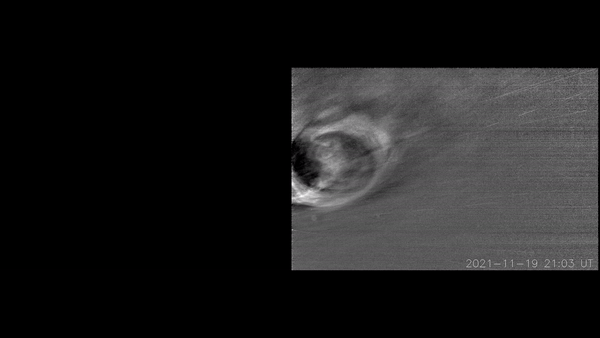NASA's Parker Solar Probe Reveals New Insights into Solar Storms

Space News
World
NASA's Parker Solar Probe has made a groundbreaking discovery, offering scientists a rare glimpse inside a coronal mass ejection (CME) as it erupted from the sun. These CMEs, massive clouds of plasma, are known to cause both stunning auroras and disruptive effects on electrical grids and satellites when they interact with Earth.

(Image credit: U.S. Naval Research Laboratory)
The probe's Wide-field Imager for Parker Solar Probe (WISPR) captured clear images of turbulent eddies within the CME. These eddies, known as Kelvin-Helmholtz instabilities (KHI), occur when fast-moving fluid patches interact with each other. Similar phenomena are observed on Earth in cloud formations when there's a difference in wind speed at different ends of a cloud.
Solar physicists have long suspected the existence of KHI in CMEs, as plasma within these eruptions moves differently from the background solar wind. However, until now, they lacked the necessary equipment in the right location to observe them directly.
According to Evangelos Paouris, a solar physicist at George Mason University, understanding turbulence, which gives rise to KHI, is crucial for comprehending the dynamics of CMEs as they interact with the solar wind.
The Parker Solar Probe, launched in August 2018, has been able to venture closer to the sun's corona than any previous spacecraft. Its elliptical orbit has enabled it to come within just 11.5 solar radii from the sun's surface, essentially entering the sun's outer atmosphere.
Even now, the Parker Solar Probe has not completed its final orbit. It has utilized gravity assists from Venus to increase its speed and tighten its orbit around the sun. In November of this year, the probe will make its seventh flyby of Venus, further tightening its loop around the sun. This trajectory adjustment will allow it to come within just 9.5 solar radii from the sun in 2025 and beyond.
The findings from the Parker Solar Probe provide valuable insights into the mechanisms behind solar storms, aiding scientists in better predicting and understanding these phenomena.


